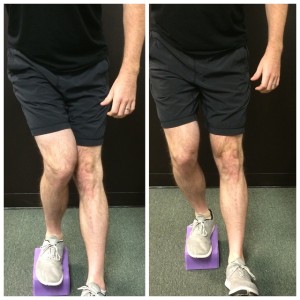Fixing the Knee

Dr. Jaicks Treats CrossFit Athletes at Annual Fall Brawl
October 22, 2015
Neurokinetic Therapy; “The Missing Link” in Treating Your Pain and Injuries
November 23, 2015Common Movement Related Knee Issues:
|
|
Have you ever had knee pain, or are you dealing with knee pain on a daily basis? Do certain movements or activities always aggravate it? There are many causes of knee pain, yet very few of them actually involve an issue with the knee itself. Sure, if someone falls into the side of your leg during a game, you may suffer some structural damage to the joint and its passive structures (ligaments and meniscus) and experience pain. But the overwhelming majority of individuals who experience knee related issues participate in non-contact sports or no sports at all.
So if the knee isn’t the problem, then what is, and why is that where you have pain? You often don’t have to look far for the answers. I like to think of the knee as the “problem child” of the hips and ankles, meaning the knee is often the site of pain for dysfunctions at the hip and/or ankle.
The Hips: Our hips and thighs contain some of the largest and strongest muscles in the body. These muscles need to generate a lot of force resist gravity while moving us about. Many of them originate at the pelvis, run across the thigh bone (femur), and attach to various regions above and below the knee. If these muscles become irritated, overworked, or overly tight, then they begin to pull on the back of the knee, causing pain and inflammation. For example, all 3 of your hamstring muscles start on the back of your pelvis, and attach just below the knee (2 onto the tibia, and one onto the fibula). They bend your knees and extend your hips when you walk, jump, etc. Individuals who sit a lot throughout the day or run frequently often have tight, stretched, and UNDER active hamstrings that stress the posterior knee. The opposite is true of the large Quad muscles, which are commonly short and restricted from OVER activity, which pulls on the front and sides of the knee. This pattern of imbalance between opposing muscle groups is common in other areas of the hips and legs as well. To correct the imbalance, release the muscles which are overactive and “wake up” those that are under active. 
The Ankles: Generally speaking, you should be have enough motion in your ankles to move your knee over your big toe without the heel coming off the ground. If you can’t, then something is restricting the ankles ability to move through its natural range of motion. You need sufficient ankle motion for your foot to properly move when walking, the control muscles work effectively, and to keep the knee to from moving inward. When the shifts inward (increased knee valgosity), the medial structures of the knee become over-stressed. This not only causes pain, but also leaves you more susceptible to more serious knee injuries. Ankle mechanics can be significantly improved by restoring proper motion to the joint through adjustments and soft tissue treatments.
There are many variables that can contribute to knee pain. Imbalanced muscle patterns and improper movements in the hips and ankles are two of the more common factors that are associated with knee related issues. Although complex in nature, these issues can be easily and effectively treated by improving movement quality and reducing stress points and caused by joint or muscle restrictions.
We specialize in resolving pain and treating conditions of the muscles, joints, and ligaments through improving movement quality. If you have constant or reoccurring knee problems, we have solutions. Contact us, and learn how you can move better to live better.
![Jaicks_logo_final[1]RGB208](https://jaicksspinesport.com/wp-content/uploads/2015/08/Jaicks_logo_final1RGB208.png)
